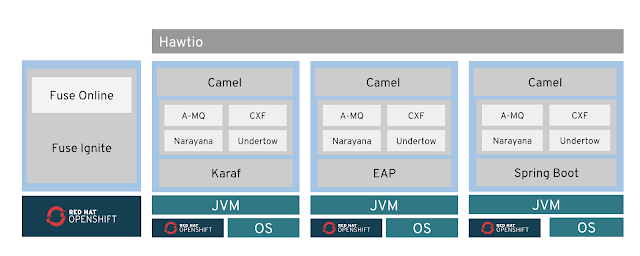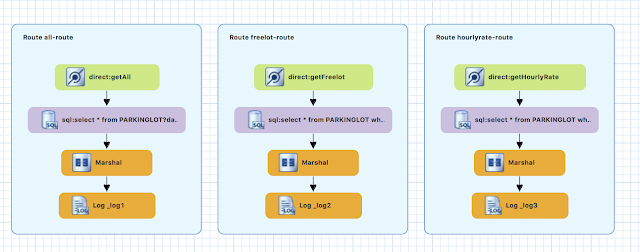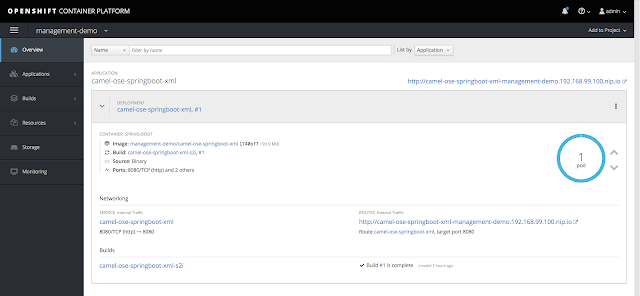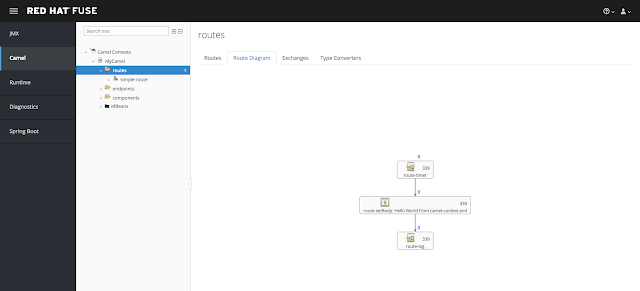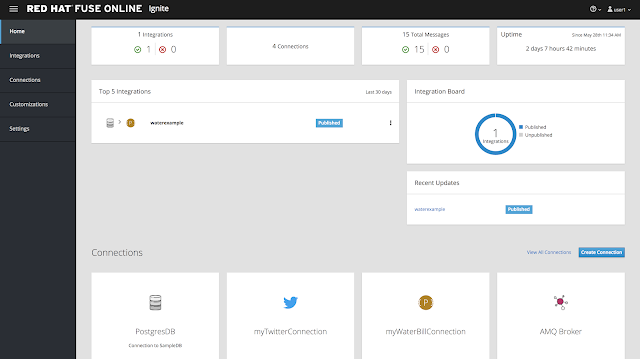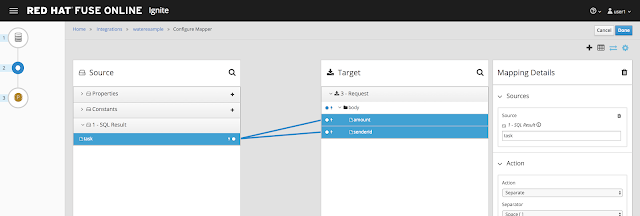Red Hat Fuse 7 (formerly called Red Hat JBoss Fuse) is now officially available. This cloud-native, distributed solution allows developers to easily develop, deploy and scale integration applications. Architects can compose and orchestrate microservices with Red Hat Fuse to introduce agility to the systems. In this release, Fuse also empowers integration experts and business users to become more productive with the self-service low-code platform. With this new agile integration solution, enterprises can now engage in wider collaboration with and among partners at a much quicker pace.
Here's where you can download it: https://developers.redhat.com/products/fuse/download/.
What's in Fuse 7?
Camel still is the core component in Fuse. Due to the complexity of integration solutions, a pattern-based integration solution is crucial for preventing developers from falling into complex, tangled, and spaghetti-like integration logic. Therefore, pre-built components and pre-defined patterns are always going to be the way to develop integration solutions, regardless of whether they are local or in the cloud.
Narayana is now the transaction technology, to get you ready for handling more-complex distributed transactions.
Jetty is deprecated and replaced by a more streamlined, lightweight web container: Undertow.
One of the most common questions I get from people just getting started with Fuse is, "Why do you need to have so many different options for runtime?" It's because we believe developers should be able to choose what best suits them, for example:
- Spring Boot for microservices
- Karaf 4 for OSGi lover
- Red Hat JBoss Enterprise Application Platform for Java EE developers
A Cloud-Native Integration Platform
Building cloud-native applications can be complicated. Integrating them as well as making the integration solution itself be cloud-ready is even more challenging. You need to address the entire software lifecycle as whole, for example, creating applications with a smaller footprint, automating the deployment flow, and monitoring applications in a distributed environment. Because the Fuse 7 platform's features and technology that take care of much of this complexity, integration teams can now focus on the most important thing: the business logic of the integration application.
Lightweight Development
Building a small-footprint microservice/service is the most fundamental thing when it comes to moving integration into the cloud. Both the Spring Boot and Karaf runtimes are lightweight and microservices-enabled. Developers can take advantage of pattern-based integration in Camel, and plugins help developers package their integration application as a container to be cloud-ready.
Hybrid Deployment
After deployment, Fuse 7 helps developers to package the application into immutable images. Based on your versioning and deployment strategy, these images can be tagged and sent along to be deployed in different stages of the environment. The platform also takes care of the availability, scalability, and resiliency for the application; scaling up and down the application require just a few clicks in the UI. Or, if you prefer to automate that, you can. The application not only runs in the cloud, it can also be run as a single, standalone application. All three runtimes are available to run in both scenarios.
Management That Provides a Centralized Application View
Managing a distributed cloud environment is a nightmare: instead of a couple instances, you now have thousands of individual running instances. Fuse gives you a centralized viewing console in the cloud environment, so it will be much easier to locate all the running Fuse instances. Also, each running application is managed by Red Hat OpenShift, which provides comprehensive features for managing applications in the cloud.
Low-Code Integration for Citizen Integrators
Another new feature introduced in Fuse 7 is the Red Hat Fuse Online self-service platform, which allows citizen integrators to build integration services on their own. Fuse 7 allows a company to have a single, standardized platform instead of having multiple pieces of technology for different user characteristics, allowing maximum collaboration between developers and citizen integrators. With the intuitive interface and the highly customizable components' capabilities, citizen integrators can quickly deliver an integration solution without waiting for a developer's implementation. And developers can concentrate on developing more-complex integration logic and also package that into the platform so the citizen integrators can re-use it on the fly.
When you log in to the platform, you will be greeted with an overview of all the available integrations and connectors as well as the status of the running integrations.
Integrations allow an integrator to create an application by simply dragging and dropping the pre-built connectors or by mapping between input source and output target data.
When there is a need for more-complex process, you can also add customized connectors by simply importing the project package into the system. The customized connectors can be created by the in-house developer or provided online from our open source community.
Try Fuse 7 Now
You can try the new version of the platform here:
https://www.redhat.com/en/explore/fuse-online
So what are you waiting for? Start your new Fuse 7 adventure today.
Last updated: May 31, 2024